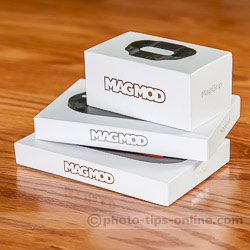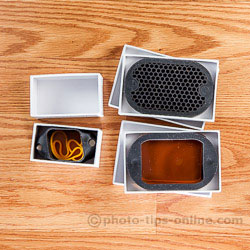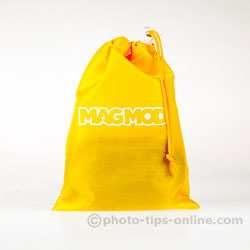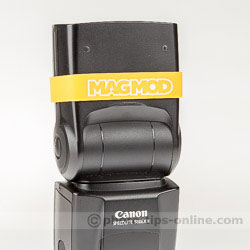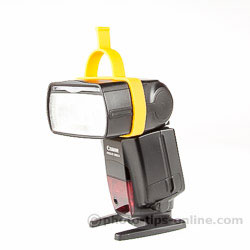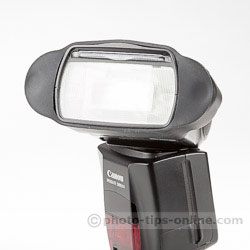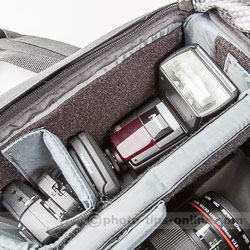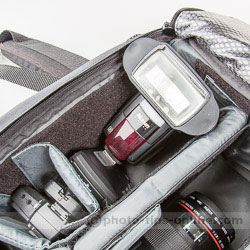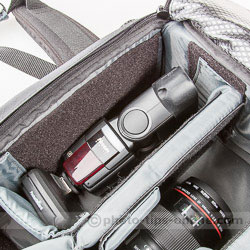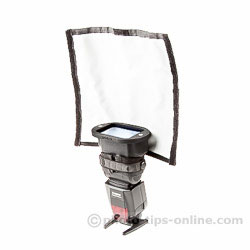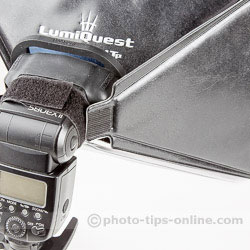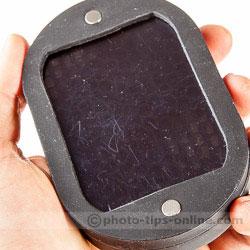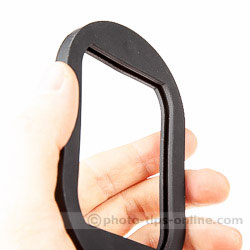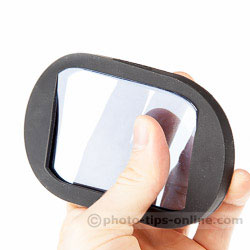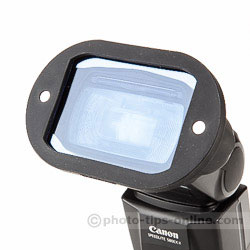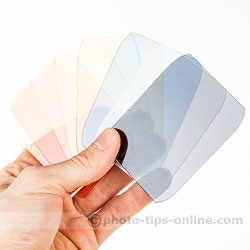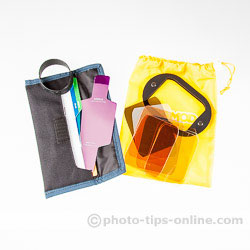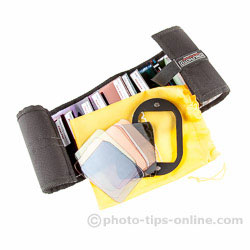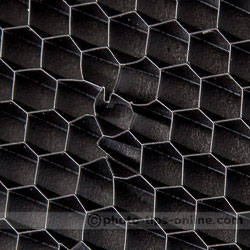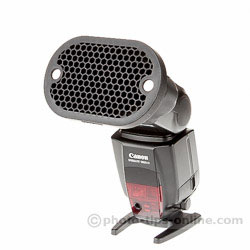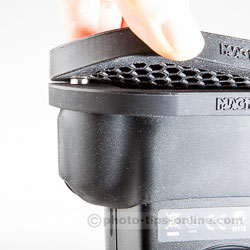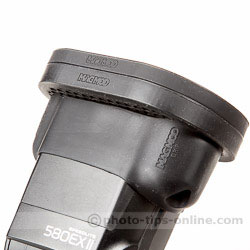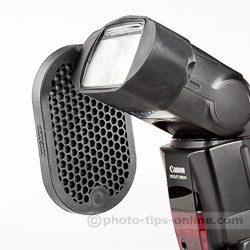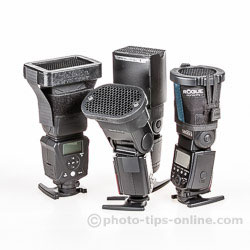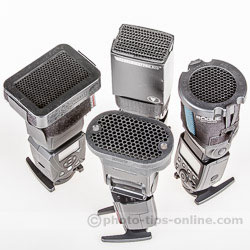MagMod Basic Kit review: grids and gels for speedlights
MagMod is a fairly new player in the market of speedlight accessories. The company has set out on a mission to revolutionize the way people use flash grids, gels, and other common flash light modifiers. Many speedlight accessories rely on Velcro-based straps (like, for example, LumiQuest UltraStrap) to mount on a flash head. MagMod employs magnets to make the mounting faster and easier. Here, we review MagMod Basic Kit, which consists of the MagGrip, MagGrid, and MagGel.
MagMod Basic Kit comes in a premium iPhone-like packaging: simple and elegant white boxes of high quality cardboard. The kit includes a couple of extras: a trigger band that can be used to attach radio receiver to your flash, and a carrying pouch. Our version of the band is yellow, but we've heard that the updated design will be in black. It will also have a larger transmitter opening.
MagMod is a system based on MagGrip – a silicone rubber band that stretches over your flash head and has two strong built-in magnets. The magnets are used to attach different speedlight accessories. At the moment, MagMod offers only two attachments: a grid (MagGrid) and a gel holder (MagGel), but more products are being prototyped, including some sort of a reflector/bouncer (according to the company representatives).
MagGrip is designed to fit virtually any professional speedlight. We tested it with about 10 different flashes from smaller Nikon SB-700 flash to the extremely "wide-headed" LumoPro LP160. In all cases, the grip fit extremely securely, and it was really hard to imagine that there was any chance for it to slip off. The silicone rubber is extremely durable and strong. It takes quite a bit of force to stretch MagGrip and some practice to get it on a flash head without jamming the fingers :). After you get used to it, it's not a big deal. Once MagGrip is on the flash head, the magic starts to happen: attaching MagGrid or MagGel literally takes less than a second.
The best way to use MagMod system is to keep MagGrip on the flash at all times and quickly swap the accessories, as your photoshoot demands. Ideally, you would never need to take it off of your flash head. However, since the magnets are relatively large, your flash with MagGrip on may not necessarily fit into your gear bag. For example, we had to make some extra room in one of our backpacks to accommodate the MagGrip, as shown in the images below.
Also, since MagMod does not offer any diffusers yet, you may want to use your flash with light modifiers of other brands. This likely means that you have to take MagGrip off the flash, because it is not compatible with some other systems due to its size. For example, if you want to use MagGel with a softbox or reflector, your options are limited, compared to some other solutions. As you can see in the following photos, MagGel works reasonably well with Rogue FlashBenders, but not so much with LumiQuest or Honl Photo softboxes.
Speaking of the MagGel unit, we have to say that after using it for a while, we absolutely loved the ease of use it delivered. The holder is a silicone rubber frame that has a slot for filters. The filters are made of hard but flexible plastic, and they are designed to last for years, unlike many other gels that wear off over time or get melted. (Note that MagGel filters do get scratched up fairly easily, but that does not affect their performance.)
To change gels, you just pop the installed one out of the frame and insert a new one. It takes just a couple of seconds. This is pretty good, but Honl Photo Gels can be changed just as quickly. However, filters from Honl Photo are not stackable, whereas single MagGel holder can take up to 3 gels. On top of that, if you really need to swap or stack filters extremely fast (under one second), you can buy additional MagGel holders and, instead of inserting multiple gels into one holder, stack the holders themselves. This is something no other system can offer at the moment.
MagMod Basic Kit comes with 8 gels: Full CTO, 1/2 CTO, 1/4 CTO, 1/2 Blue, 1/2 Tough Plusgreen, 1/2 CTS, 3x Neutral Density, and Opal Frost Diffusion. This is a great set for basic gelling needs. We wish, however, that the filters were marked in some way, so that they could be easier identified. In our opinion, Rogue Universal Gels have the best labeling to this date (not only each filter is marked with its name but also with its light loss value). Honl Photo gels has stickers on them but only with the names. So, this is the area, where we want to see MagMod folks to improve their product.
MagGrid is another key item from the MagMod Basic Kit. It is also made of silicone rubber, which makes it extremely durable. Many plastic or even metal honeycomb grid can get damaged with use (see the image below, for example), but MagGrid is soft and flexible, so it will stay free of chips and cracks.
Like MagGel, MagGrid has built-in magnets that are used to quickly attach to the flash head with installed MagGrip. MagGrid is thicker than MagGel and features bigger magnets. It turns out that when you stack them, it is better to attach the MagGrid unit first and then put MagGel on top. Otherwise, the stronger magnets of the grid may pull out the magnets from the gel holder. Even, if that happens, it's really easy to put the magnets back in, but it may not be something you want to fiddle with in the middle of your photo session. So, it can be a bit of inconvenience to remember the order in which to attach the accessories, but this was not much of an issue to us. Even if you mess up the order, you can twist MagGel off of the flash head, instead of pulling it off, to avoid the magnets coming out.
MagGrid delivers 39 degree beam pattern. Stack two of them and you get a 19 degree spot. You can even stack more than two for tighter light beam.
One of the great things about magnets is that they not only stick to each other but also to some metals. Even though both, MagGrid and MagGel, have low profile and can easily fit into your pockets, we found ourselves often leaving them (when not in use) where the speedlights are positioned. You can simply attach them to some parts of your light stand or even stick to the side of MagGrip itself. Very neat! We were quite excited when we realized that ;)
The images below show MagGrid next to competing products: Honl Photo Grid, Rogue Grid, and Speedlight Pro Kit Snoot/Grid.
The MagMod system is priced competitively, but it is more expensive that many other grid/gel solutions. MagMod Basic Kit will set you back $89 (USD). For the same money, you can get 2 Honl Photo Grids, 1 Speed Strap, and a similar set of gels. Rogue Gird has stackable inserts and delivers 16, 25, and 45 degree beam patterns, and even when you add a Rogue Gel Kit with 20 gels, you still looking at a price under $80 (USD). However, these systems cannot deliver the level of efficiency and ease of use MagMod can. So, if that's what you are after, MagMod is well worth the premium.
To conclude, the MagMod system is a brilliant solution for photographers who use grids and gels with their speedlights. MagMod is the fastest way to add a grid to your bare flash or apply a color gel to it. The stackable nature of the MagMod accessories allows you to quickly change your lighting by tightening the beam pattern or combining multiple gels. If you want to use MagGel with light modifiers you already own, make sure they are compatible, because MagGrip may not fit some portable softboxes. Soon, however, MagMod will be coming up with its own diffusers, and we cannot wait to try them out.
